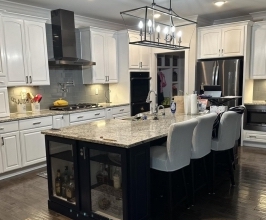General Finishes is proud and honored to be featured in the August 2015 issue of Woodworker's Journal. Michael Dresdner, a nationally known finishing expert, highlights the advantagous of GF water based products in his article (below) titled "Water Based Coatings".
"Water-based coatings are becoming more popular, and there are good reasons why. Manufacturers have kept what was good but fixed a host of old problems.
Clear water-based finishes have been around since 1980, but lately they've been gaining converts, with some 50% of woodworkers saying they now use them.
Why the change? To be honest, when water-based clear lacquers and polyurethanes first came on the market, they had lots of problems. Many of those issues have now been solved, and some new finish options have been added, making water-based a much more enticing alternative. Let's look at what's changed, what's the same, and the best ways to apply them. We'll also look in on some of the newer offerings in the field.
What's Different
The original water-based coatings were difficult to brush and spray, and did not flow out well. They were very sensitive to even the slightest surface contamination, and demanded near ideal temperature and humidity controls during application and cure. To make matters worse, the final coats were often less durable than many of their solvent-borne counterparts. In short, they were harder to work with and sometimes left a poorer final finish.
Thanks to some interesting additives, the new generation of finishes go on and flow out much better. Those same additives make the coating less sensitive to contamination and give them better adhesion when applied over oil-based stains and sealers.
Along with better adhesion comes better films. Expect more durability across the board, with higher resistance to water, heat and chemicals, and, in some cases, even improved resistance to abrasion. There's also a wider range of materials available, with new items that make the whole finishing experience more pleasant and varied. (More on that later in this article.)
What's the Same
From the beginning, water-based had some advantages, and they're still there. Water-based coatings are nonflammable, low odor, contain fewer hazardous solvents, dry faster and have a higher solids content. Why the first three are advantageous is pretty self-evident, but the other two deserve a closer look.
Faster drying means that you may be able to finish a project completely in one weekend, something that means a lot to those of us who only have limited woodshop time. Pair water-based stains and glazes with water-based topcoats, and drying and handling times plummet from days to hours. You'll wait less after staining and between topcoats.
Higher solids is a less obvious advantage. The solids content is the amount of finish that remains on the surface, as opposed to the amount of solvent that evaporates off. For instance, most solvent-based lacquer is shot at below 20% solids after thinning. That means for each coat you spray on, less than one fifth of it remains to form a finish, with all the rest evaporating. Water-based coatings typically have solids contents almost twice as high, so they tend to build faster.
Then there's the color, which can be either a boon or a bust. Most water-based topcoats dry water clear, as opposed to the amber hue of most solvent and oil-based coatings. That can be an advantage when you want to keep light woods from turning yellow. Of course, you can always tint the coating with amber dye, so you can get the best of both worlds.
Application Techniques
Good application techniques still make a big difference, and rule number one is to apply it sparingly. Because of how water-based coatings cure, you'll get much better results applying a coat that is just barely uniformly wet. Don't pile it on; go for thin but evenly wet. Once it's on, be patient. Unlike solvent finishes, water-based coatings do
not look particularly good when wet, but they flow out considerably during drying. That's especially true when spraying. While wet, you'll see dramatic orange peel, but don't try to fix that by spraying heavier. Stop and wait, and it will eventually flow out far smoother than you expect.
I still prefer using a paint pad on large, flat surfaces, either vertical or horizontal. A paint pad has a huge application surface compared to a brush, and its easier to lay down a smooth, thin layer quickly. When you must resort to a brush or foam-on-a-stick applicator, be gentle. Flow rather than scrub to avoid foaming those tiny air bubbles that get trapped in the finish. If you work quickly, you'll now have more working time to blend and even up the coat. If you're curious, my favorite bristle brush options are Purdy's Chinex or Syntox brushes.
Spraying
When spraying, use a small fluid aperature (1 mm or slightly larger) and spray sparingly, until the entire surface is just barely wet. Use a good quality gun that lets you control both the fluid and air flows, and hold the gun a tad closer to the wood (6" vs. 8"), especially with HVLP or LVLP guns. With standard compressed-air guns, dial the pressure back a bit so the finish lays out gently rather than smacks onto the surface. Oh, and clean the guns (and brushes) immediately and thoroughly with soap and water or, better yet, proprietary cleaning solvents. For spraying water-based finishes, the Titan Gravity Feed HVLP Spray Gun works if you have a compressor that will handle a conversion gun. If you don't, or want a freestanding option, you might try the Earlex Spray Station 5500.
Color Add-ons
You'll see a lot more water-based pigment and combination stains available than ever before, and they can be either wiped on and off, or sprayed on. Dye stains, pre-mixed and ready to use, apply the same way, but without the mess of mixing and the fear of colors that don't match from batch to batch. All can be intermixed to create custom colors and can be added in small amounts to clear coatings to make tinting lacquers.
Some of the more enticing new offerings are from General Finishes. Their Glaze Effects (solid color) and Pearl Effects (pearlescent colors) are thicker versions of stain that can be used on raw wood or in between coats of finish to create shading, antiquing and special effects. Then there's their Enduro-Var water-based polyurethane varnish, which is the closest thing to old world oil varnish you can find in a faster drying water-based mode.
Bottom line? If you haven't already done so, maybe its time to take another look at water-based coatings."
If you have finishing questions or questions regarding this article, contact Woodworker's Journal in writing at 4365 Willow Dr. Medina, MN 55340 or by e-mail at [email protected]. Please include your address, phone number and email address (if you have one).
Also, feel free to contact General Finishes on Facebook at https://www.facebook.com/generalfinishes?fref=ts if you have questions regarding any of our products.
For great project ideas and design inspiration follow us on Pinterest at https://www.pinterest.com/generalfinishes/, on Instagram at @generalfinishes, on Twitter at @GeneralFinishes and on Google + at https://plus.google.com/+generalfinishes/posts
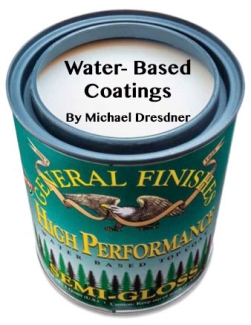

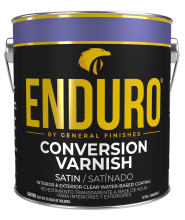 Enduro Water-Based Conversion Varnish
Enduro Water-Based Conversion Varnish
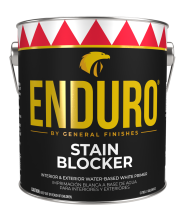 Enduro Water Based Stain Blocker Primer
Enduro Water Based Stain Blocker Primer
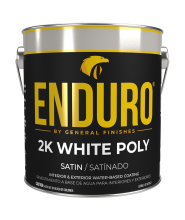 Enduro Water-Based Tintable 2K White Poly
Enduro Water-Based Tintable 2K White Poly
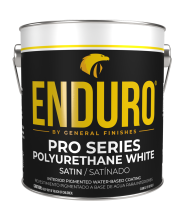 Enduro Water-Based Pro Series White Polyurethane
Enduro Water-Based Pro Series White Polyurethane
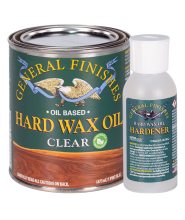 Hard Wax Oil & Hardener
Hard Wax Oil & Hardener
 Gel Stains
Gel Stains
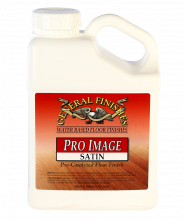 Pro Image Flooring Topcoat
Pro Image Flooring Topcoat
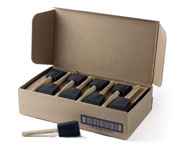 Jen Poly Brushes
Jen Poly Brushes
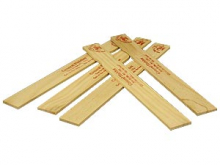 Stir Stix
Stir Stix
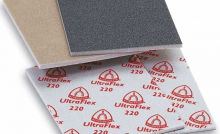 Ultraflex Softback Sanding Sponge
Ultraflex Softback Sanding Sponge

